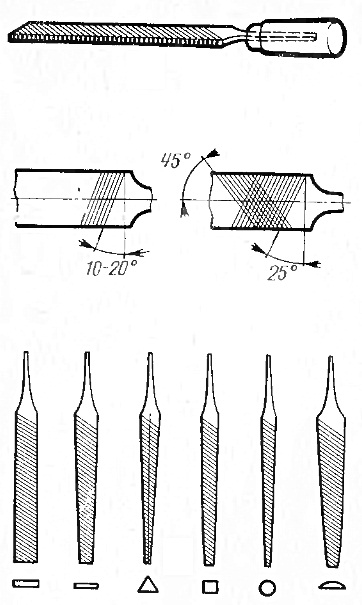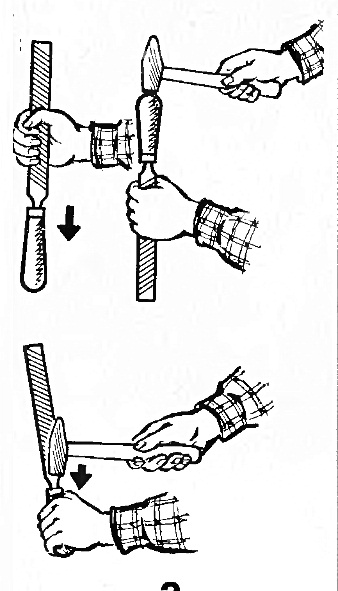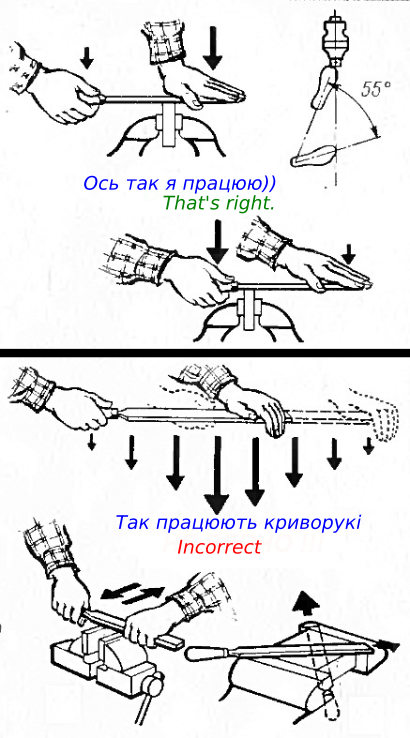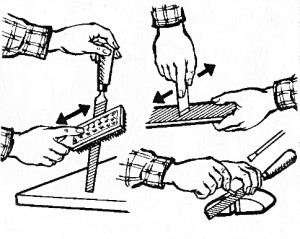File — this steel bar with a notch on the surface is known to all and is very popular among home craftsmen, locksmiths and even some radio amateurs. A file is a kind of a peculiar cutting tool, which provides processing of various kinds of materials, parts and surfaces and this is what we will talk about in this article.
This article is informative in nature. Thanks to the notches on the hardened metal, the file can easily handle both metal and wood or any other parts.
Choice of file:
Files can be different, as for the size of the metal bar, the shape of the notch pitch and the shape of the sharpening profile, Figure 1.

Depending on whether the file is single or double notched, they are used for soft metals or hard alloys respectively. Files are used for sharpening saws, knives, scissors, and even woodworking.
The notch on a file has a variety of configurations (notch pitch, shape, size) and therefore files are divided into drachovye (with a large pitch cut — for roughing), lichkovaya (with medium — for finishing) and velvet (with the smallest pitch — for grinding).
Files are also differentiated by shape, rectangular, circular triangular, etc. — This makes it possible to work on a wide variety of surfaces.
Setting up the file:
Usually the file is sold without a handle, so you need to put it on yourself figure 2.

Special handles for file made of wood such as maple, ash, birch, linden are also sold separately they are a wooden handle with an iron ring. The ring on the wooden file handle is necessary so that when you drive the shank of the file into it, it would not crack.
You just need to drill a hole in the handle that is smaller in diameter than the tail of the file, pour glue and insert the tail into the hole by lightly tapping on the handle.
How to work with a file:
Working with a file is not difficult, but it is necessary to follow the safety rules Figure 3.

First, of course, you need to take a file of the appropriate notch and shape to the surface to be filed and the nature of processing.
When working with the file it is necessary to hold it with both hands and make sure that your fingers do not get in contact with the cutting edges (it is only necessary to hold the file from above and not grip it as shown in picture №3).
The file should be moved up and down on the workpiece without gripping it from underneath! The file only needs to be pressed when moving forward (working stroke).
How to clean a file:
A good craftsman always keeps his tools tidy. A file can become clogged with shavings after work. The chips must be cleaned off figure 4.

If the file notch gets clogged it becomes unusable, the chips can be shaken off by lightly tapping the file on a wooden table or removing them with a corded brush.
A file can be cleaned with special metal scrapers, but this is only suitable for large files. Do not use steel or copper wire for cleaning — it will ruin the notch.
When filing ductile steel with a personal file, chips quickly score the hollows between the file teeth, leaving deep grooves on the surface of the piece. To avoid unwanted deep grooves on the surface of the workpiece, chalk the file with chalk.

